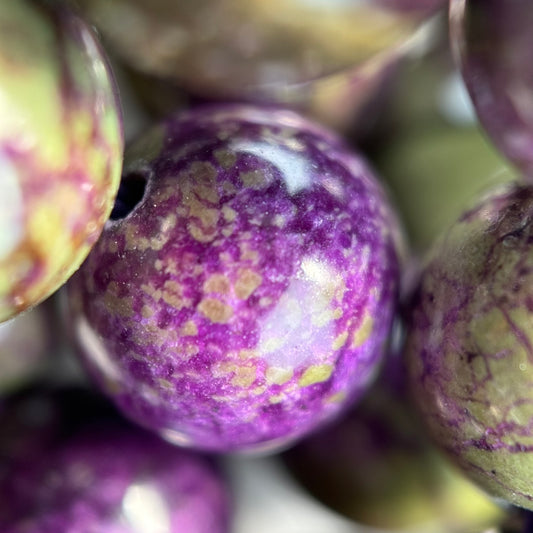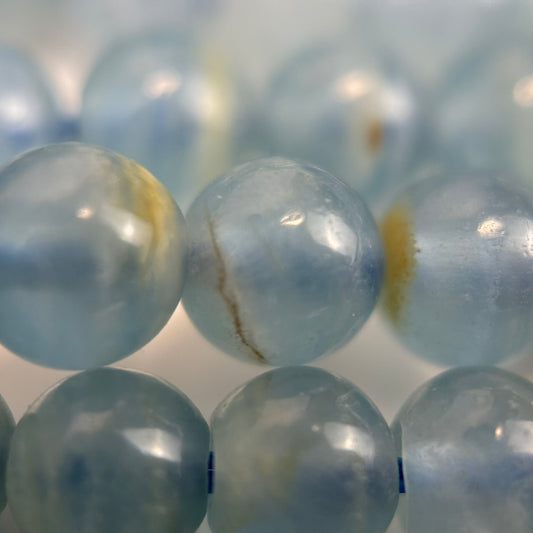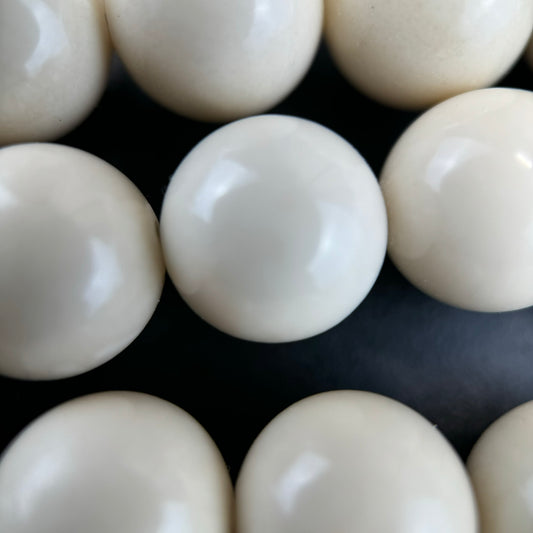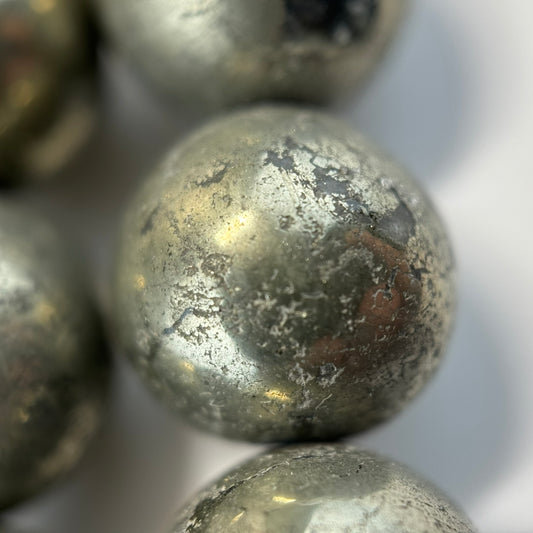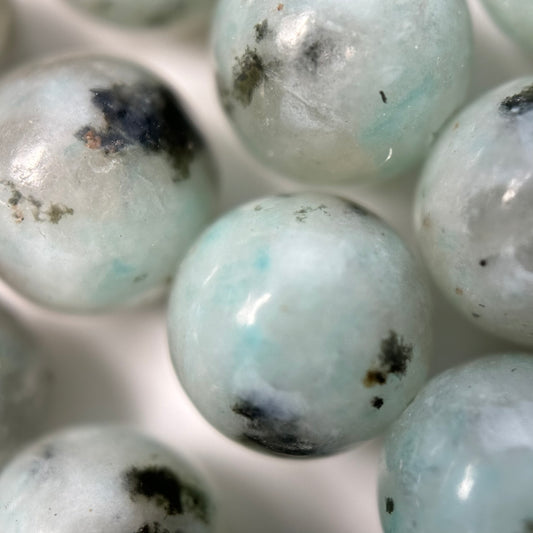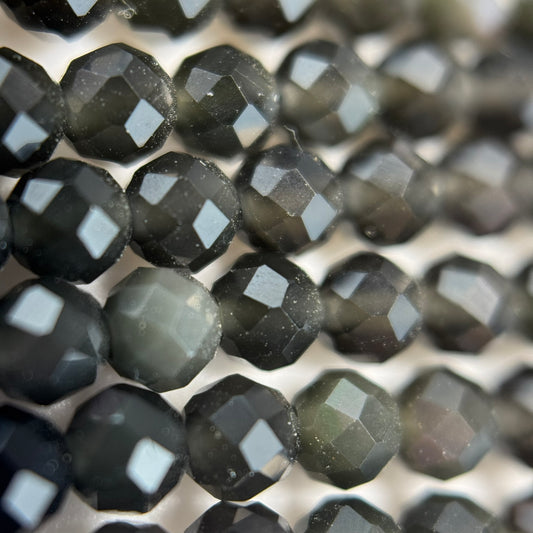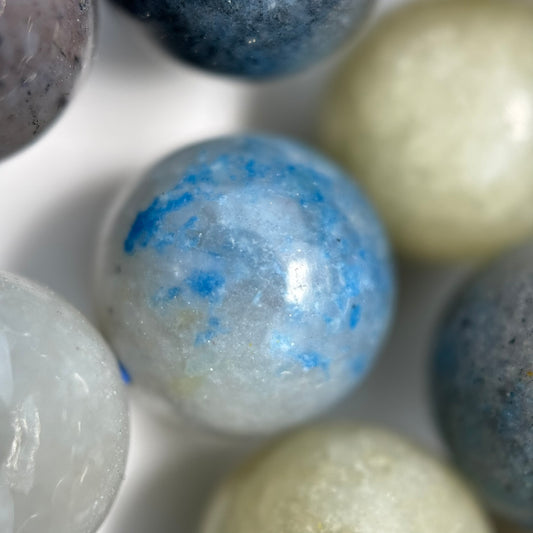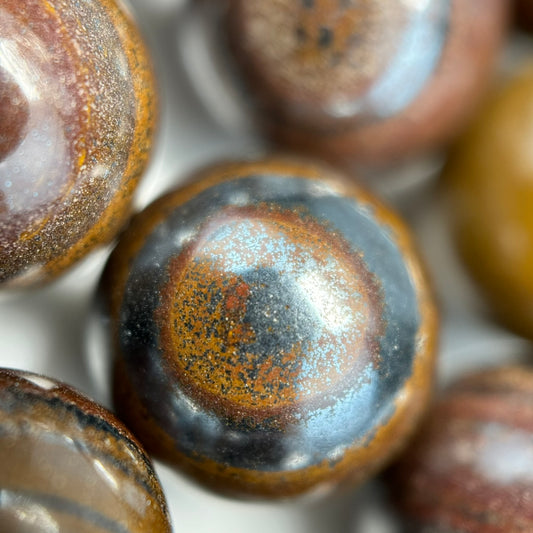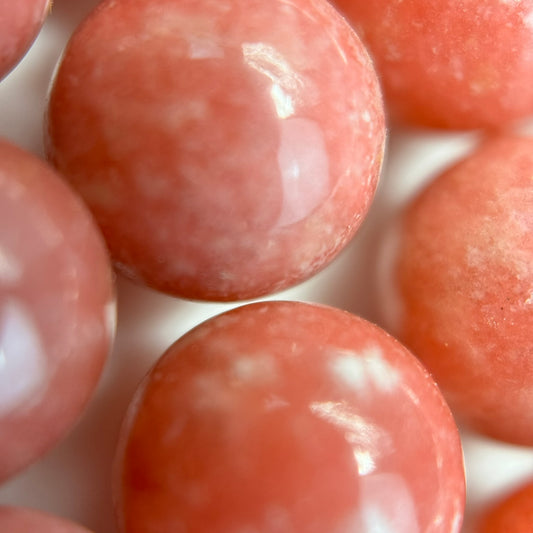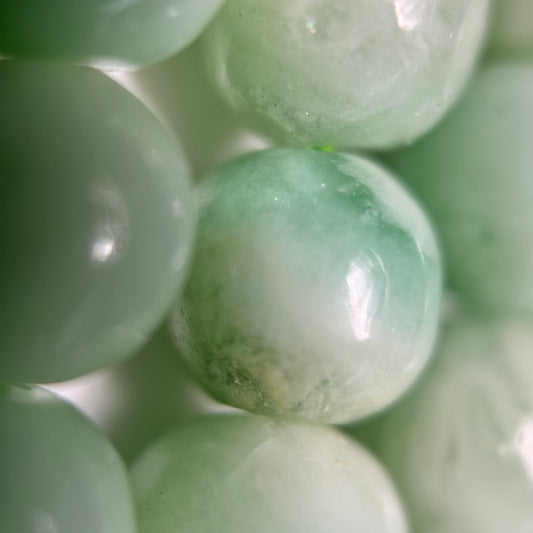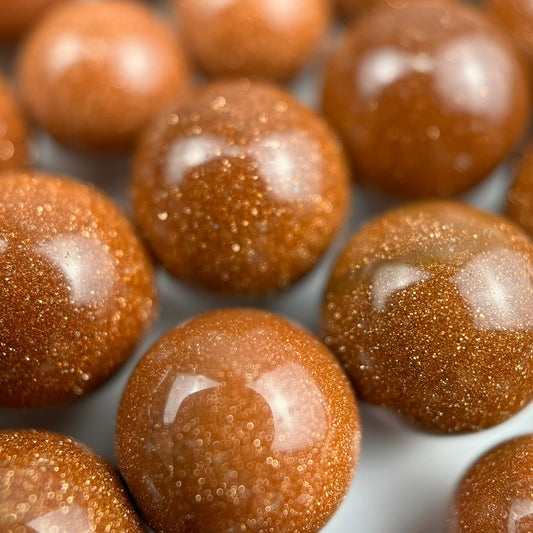Unique Gemstone Beads
Discover Rare and Exceptional Gemstone Beads
Our Unique Gemstone Beads collection features rare, unusual, and distinctive gemstones that stand apart from common varieties. Each bead in this collection represents geological rarity, exceptional visual properties, or unique mineralogical characteristics that make them prized by collectors and jewelry designers seeking one-of-a-kind pieces.
What Makes These Gemstones Unique
- Limited geological occurrences worldwide
- Distinctive optical phenomena like chatoyancy, asterism, or color-change
- Unusual crystal structures or formation processes
- Rare mineral combinations or inclusions
- Exceptional color variations not found in standard varieties
Geological Rarity and Formation
These unique gemstones form under extraordinary geological conditions that rarely occur in nature. Many require specific combinations of temperature, pressure, and mineral availability that exist in only a few locations globally.
Formation Factors
- Metamorphic processes creating rare crystal structures
- Hydrothermal activity producing unique mineral combinations
- Volcanic origins with specific cooling conditions
- Sedimentary processes with unusual mineral deposition
- Contact metamorphism creating distinctive banding patterns
Optical Phenomena and Visual Properties
Many unique gemstones display remarkable optical effects that enhance their beauty and value. These phenomena result from specific internal structures interacting with light.
Types of Optical Effects
- Chatoyancy: Cat's eye effect from parallel fibrous inclusions
- Asterism: Star patterns from intersecting needle inclusions
- Color Change: Different colors in various light sources
- Iridescence: Rainbow-like color play from light interference
- Pleochroism: Multiple colors visible from different angles
- Adularescence: Soft inner glow or shimmer effect
Mineralogical Composition
Unique gemstones often contain rare mineral combinations or unusual chemical compositions that create their distinctive appearances. Understanding these compositions helps in proper care and appreciation.
Common Mineral Groups
- Silicate minerals with rare element substitutions
- Phosphate minerals with unique crystal habits
- Oxide minerals with exceptional color centers
- Carbonate minerals with unusual banding
- Mixed mineral aggregates creating composite stones
Hardness and Durability Considerations
Unique gemstones vary widely in hardness, requiring appropriate care based on their Mohs scale rating. Some rare stones may be softer than common varieties, necessitating gentle handling.
Durability Factors
- Mohs hardness ranging from 3 to 8+
- Cleavage directions affecting breakage risk
- Fracture patterns influencing durability
- Stability under light and heat exposure
- Resistance to chemicals and cleaning agents
Cutting and Processing Challenges
Many unique gemstones present special challenges during cutting and processing due to their unusual properties, requiring skilled lapidary work.
Processing Considerations
- Directional properties requiring specific cutting orientations
- Inclusion patterns affecting optimal cut styles
- Color zoning requiring careful planning
- Cleavage planes necessitating precise cutting angles
- Optical phenomena requiring specific facet arrangements
Sources and Geographic Origins
Unique gemstones typically originate from limited geographic locations, often single mines or small regions. This scarcity contributes to their uniqueness and value.
Notable Source Locations
- Specific mines in Africa, Asia, and the Americas
- Volcanic regions with unique geological activity
- Metamorphic zones with rare mineral assemblages
- Alluvial deposits from specific river systems
- Underground formations requiring specialized mining
Care and Storage Guidelines
Proper care ensures these unique gemstones maintain their beauty and value. Storage and cleaning methods should match each stone's specific properties.
Care Recommendations
- Store separately to prevent scratching
- Use soft cloths for cleaning delicate varieties
- Avoid ultrasonic cleaners for stones with inclusions
- Protect from extreme temperature changes
- Limit exposure to direct sunlight for color-sensitive stones
- Use appropriate cleaning solutions based on mineral composition
Value Factors and Collectibility
Unique gemstones derive value from multiple factors beyond simple rarity. Understanding these factors helps in making informed purchasing decisions.
Value Determinants
- Geological rarity and limited availability
- Quality of optical phenomena or color
- Size and carat weight considerations
- Cut quality maximizing natural beauty
- Provenance and source documentation
- Market demand and collector interest
Jewelry Design Applications
Unique gemstone beads offer exceptional opportunities for distinctive jewelry designs. Their rare properties allow for creative applications that showcase their individual characteristics.
Design Considerations
- Showcase optical phenomena with appropriate settings
- Highlight color variations through strategic placement
- Combine with complementary stones for contrast
- Use in focal pieces to emphasize uniqueness
- Create collector-quality jewelry pieces
- Design for specific occasions or themes
Identification and Authentication
Proper identification of unique gemstones requires knowledge of their specific characteristics. Some may be confused with more common varieties or synthetic materials.
Identification Methods
- Visual examination of optical phenomena
- Hardness testing using Mohs scale
- Specific gravity measurements
- Refractive index determination
- Spectroscopic analysis for chemical composition
- Professional gemological certification
Metaphysical and Cultural Significance
Many unique gemstones hold special meaning in various cultures and metaphysical traditions. These associations add to their appeal beyond physical beauty.
Cultural Aspects
- Historical uses in ancient civilizations
- Spiritual associations in various traditions
- Healing properties attributed to specific stones
- Symbolic meanings in different cultures
- Collector traditions and gemstone lore
Frequently Asked Questions
What defines a gemstone as unique or rare in jewelry making?
Unique gemstones are characterized by rarity, unusual geological formation, distinctive optical properties, limited geographic sources, or exceptional characteristics that set them apart from common gemstones. These may include rare minerals like Trolleite, Stichtite, or Smithsonite, or distinctive varieties like K2 Stone with azurite inclusions, each offering exceptional beauty and collectibility.
What are the geological factors that make certain gemstones rare?
Rare gemstones often form under specific geological conditions that rarely occur, such as unique pressure-temperature combinations, unusual mineral associations, or restricted geographic locations. Factors include limited source locations, complex formation processes, low abundance in nature, and specific chemical compositions that require precise conditions to crystallize.
How do unique gemstone beads differ from common gemstone varieties?
Unique gemstone beads differ in their rarity, distinctive properties, and often higher value. They may exhibit unusual colors, optical effects, or crystal structures not found in common varieties. Examples include Trolleite's rare phosphate composition, Stichtite's distinctive purple color, or K2 Stone's unique granite matrix with azurite inclusions.
What are the primary sources of rare and unique gemstone materials?
Rare gemstones come from limited geographic locations worldwide. Trolleite is found in select phosphate deposits, Stichtite occurs in specific serpentinite formations, Smithsonite forms in zinc-rich environments, and K2 Stone is unique to Pakistan's K2 mountain region. Each rare gemstone has its own restricted source locations.
How does the rarity of unique gemstones affect their cutting and processing?
Due to their rarity and value, unique gemstones require careful handling and expert cutting techniques. Lapidaries must work with smaller quantities, often preserving as much material as possible. The cutting process considers the stone's specific properties, such as cleavage directions, hardness variations, and optical characteristics that maximize beauty while minimizing waste.
What are the hardness and durability characteristics of unique gemstone beads?
Unique gemstones vary widely in hardness, from relatively soft materials like Stichtite (Mohs 1.5-2.5) to harder varieties like Andalusite (Mohs 7.5). Each requires appropriate care based on its specific properties. Softer rare gemstones need protective settings and gentle handling, while harder varieties can withstand more rigorous use in jewelry.
What optical properties distinguish unique gemstones from common varieties?
Unique gemstones may exhibit distinctive optical effects including pleochroism (different colors from different angles), unusual color zoning, distinctive inclusions, or rare optical phenomena. Examples include Andalusite's strong pleochroism showing green, brown, and red, or K2 Stone's unique blue azurite orbs in white granite matrix.
How should unique gemstone beads be stored and cared for?
Store unique gemstone beads separately based on their hardness, as softer rare stones can be scratched by harder materials. Avoid exposure to extreme temperatures, direct sunlight, and harsh chemicals. Softer rare gemstones like Stichtite require extra protection, while harder varieties like Andalusite can be stored with standard gemstone care practices.
What factors determine the value of unique gemstone beads?
The value of unique gemstone beads depends on rarity, quality, size, color intensity, clarity, cutting quality, and market demand. Extremely rare gemstones command premium prices regardless of size, while more available unique varieties are valued based on their exceptional characteristics and craftsmanship quality.
What are the identification characteristics of genuine unique gemstones?
Genuine unique gemstones can be identified through specific gravity, refractive index, crystal structure, optical properties, and distinctive visual characteristics. Each rare gemstone has unique identifying features: Trolleite's phosphate composition, Stichtite's purple color and softness, Smithsonite's botryoidal formations, or K2 Stone's distinctive blue inclusions in granite.
How do unique gemstones compare to synthetic or treated alternatives?
Natural unique gemstones possess the geological history, natural variations, and authentic properties that synthetic materials cannot replicate. While synthetics may mimic appearance, they lack the natural inclusions, color variations, and formation characteristics that make unique gemstones valuable. Natural rare gemstones often show subtle variations that confirm their authenticity.
What are the crystal systems and structural properties of unique gemstones?
Unique gemstones span all crystal systems: Trolleite forms in orthorhombic crystals, Stichtite in trigonal/hexagonal systems, Smithsonite in trigonal systems, and Andalusite in orthorhombic systems. Each crystal structure contributes to the gemstone's optical properties, cleavage, and cutting characteristics.
What makes certain gemstone varieties suitable for the unique collection?
Gemstones qualify for unique collections based on rarity, unusual properties, limited availability, distinctive appearance, or exceptional characteristics. These may include rare mineral species, unusual color varieties, distinctive inclusions, limited geographic sources, or gemstones with exceptional optical effects not commonly found in jewelry.
How can collectors identify and appreciate unique gemstone characteristics?
Collectors can appreciate unique gemstones by understanding their geological formation, rarity factors, optical properties, and distinctive features. Examining specimens under magnification reveals inclusions, color zoning, and structural characteristics. Learning about each gemstone's specific properties, sources, and formation enhances appreciation of their uniqueness.
What are the care considerations for different types of unique gemstone beads?
Care varies significantly based on hardness and properties. Soft rare gemstones like Stichtite require gentle cleaning with soft cloths and protective storage. Harder varieties like Andalusite can withstand standard jewelry cleaning. Always research the specific care requirements for each unique gemstone type, as their rarity makes proper maintenance essential for preservation.





